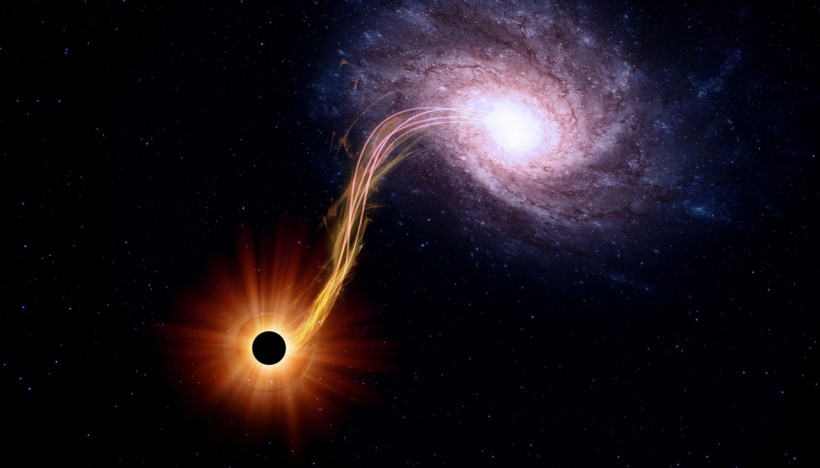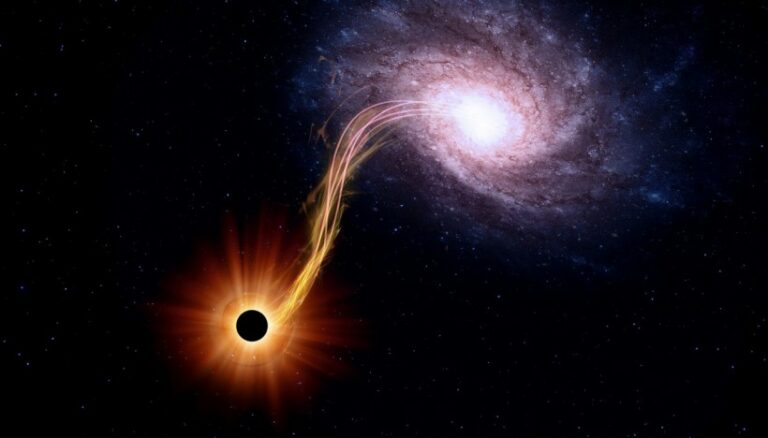Molecular Cloud ‘Tadpole’ Located Near the Center of the Milky Way Appears to Be Circling an Undetected Black Hole in the Galaxy
According to Phys.org, astronomers have discovered a peculiar cloud of gas known as the Tadpole molecular cloud, which seems to rotate around a region devoid of any visible objects. They suggest that this shape is most likely caused by a black hole that is approximately 100,000 times larger than the sun. Although more research is necessary to determine the exact cause of the Tadpole’s shape and movements, astronomers are confident that the molecular cloud, shaped like a comma, is revolving around one of the most sought-after objects in astronomy.

‘Tadpole’ Molecular Cloud Near Milky Way’s Center Seems To Be Orbiting a Black Hole Hidden in the Galaxy
Finding the Cloud of Gas Named Tadpole
In the Universe, black holes are categorized into two distinct mass groups. As reported by Science Alert, there are black holes with stellar mass, which could be as much as 100 times the mass of the Sun and form when a massive star’s core collapses during the end of its lifecycle, or from mergers between such black holes. Another type is the supermassive black holes that exist in the center of galaxies and have masses ranging from millions to billions of times that of the Sun. However, there are also black holes with intermediate masses that fall between these two categories.
Astronomers have suggested that intermediate-mass black holes could hold the key to uncovering answers about these cosmic entities. However, only a few of these “middleweight” black holes have been identified, with most of them only tentatively so. One of the challenges of detecting black holes is that they do not emit light, and their presence can only be inferred by observing their gravitational effects on surrounding matter or spacetime.
The central region of our galaxy, where many black holes are thought to reside, is particularly crowded with molecular clouds that give rise to star formation. This area is so dense that it can be challenging to study, but radio telescopes can penetrate the clouds and provide insights into the region’s activity. A team of Japanese astronomers, led by Miyuki Kaneko of Keio University, used data from the James Clerk Maxwell Telescope and the Nobeyama 45-m Radio Telescope of NAOJ to discover a strange gas cloud, located 27,000 light-years away, which they named Tadpole.
What’s Going on With Tadpole Molecular Cloud
According to CNet, the distinctive curved shape of the Tadpole molecular cloud suggests that it is being stretched as it revolves around a large compact object. However, what puzzles scientists is that there are no bright and sizeable objects present that could account for the gravitational pull needed to keep the Tadpole in the center of its orbit. Therefore, they suspect that a black hole is the most likely candidate for this massive, invisible entity.
Because black holes do not emit light, their detection is only possible when they interact with other matter. As a result, the exact number and mass of black holes present in the Milky Way remain unknown to astronomers.
To further investigate, the astronomers plan to employ the Atacama Large Millimeter/submillimeter Array (ALMA) telescope, hoping to detect faint signals of a black hole or any other object that might reside at the Tadpole’s gravitational center.
They published their findings in the study, titled “Discovery of the Tadpole Molecular Cloud near the Galactic Nucleus,” in The Astrophysical Journal.
Do not forget to share your opinion with us to provide you with the best posts !




0 Comments